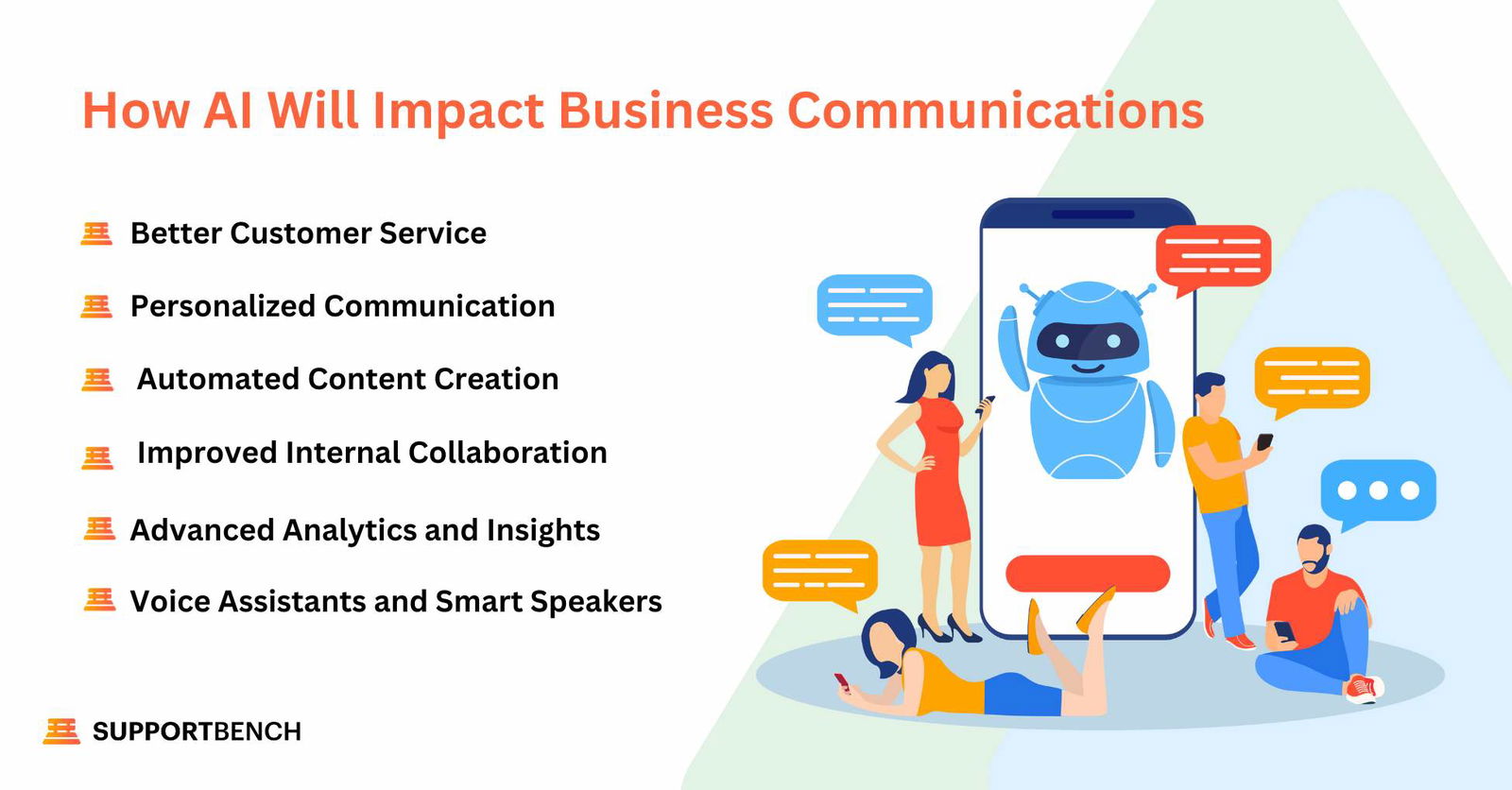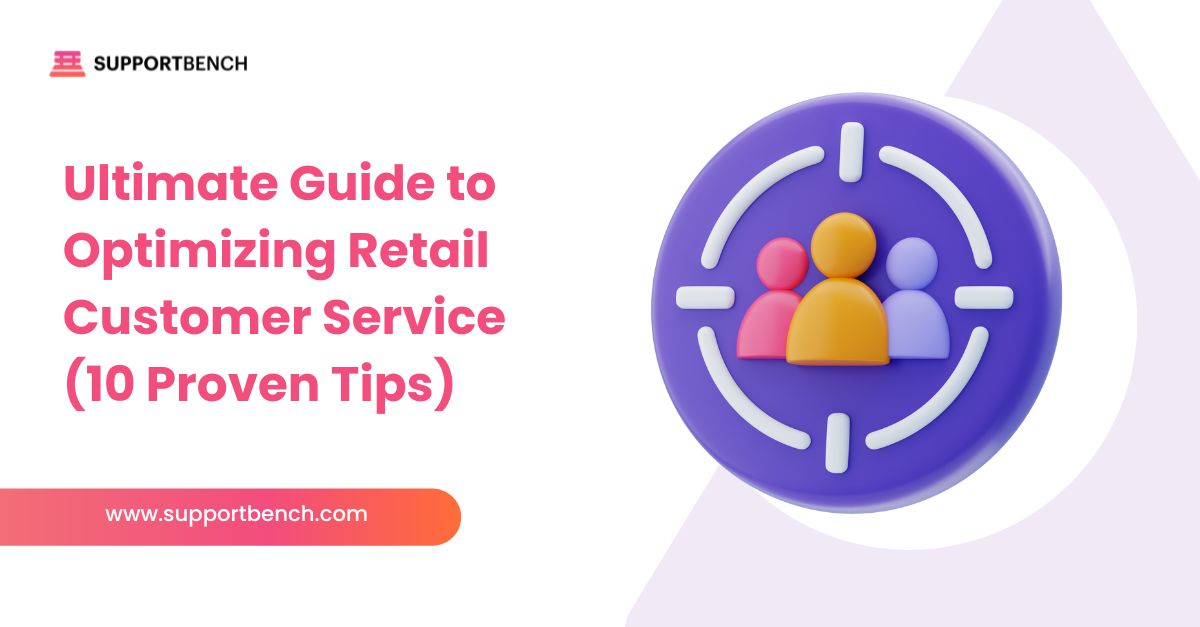Artificial Intelligence (AI) is no longer a future consideration—it’s already shaping your inbox, meeting notes, and customer interactions. Yet many businesses still operate as if it’s 2015: overloaded inboxes, missed intent, fragmented responses.
AI doesn’t just make communication faster; it makes it sharper. It filters the noise, delivers relevant insights, and personalizes outreach across every platform and channel.
This shift isn’t about replacing people—it’s about enabling more meaningful conversations, faster decisions, and proactive engagement. The real question isn’t whether your business needs AI in communication—it’s whether your current tools are letting you fall behind.
At a Glance:
AI is transforming business communication by streamlining workflows, improving personalization, and surfacing insights in real time. It enhances collaboration, sharpens decision-making, and enables proactive engagement across teams and channels. Challenges like data privacy, integration hurdles, and skill gaps must be addressed strategically. The future lies not in choosing between AI and humans — but in combining their strengths to communicate smarter and faster.
How AI is Transforming Business Communication
Artificial intelligence is fundamentally reshaping the landscape of business communication in several impactful ways. Here are some of the most significant transformations driven by AI technologies:

1. Better Customer Service
AI-powered chatbots and virtual assistants are revolutionizing customer service by handling a wide range of requests with instantaneous responses and solutions. Available 24/7, these systems provide timely support at any hour. Additionally, AI chatbots learn from each interaction, continuously refining their responses to become more effective over time.
2. Personalized Communication
AI enables businesses to deliver highly personalized communication. By analyzing customer data, AI systems can tailor messages and recommendations to individual preferences and behaviors, helping build stronger customer relationships and enhancing engagement, satisfaction, and loyalty.
3. Automated Content Creation
AI-driven tools are advancing content creation by generating reports, drafting emails, and even creating marketing copy with minimal human input. Using natural language understanding, these tools provide coherent, contextually relevant content, significantly reducing the workload for employees.
You Might Also Like:
4. Improved Internal Collaboration
AI-based technologies streamline internal communication and collaboration. AI-driven platforms can analyze communication patterns, suggest effective information-sharing methods, schedule meetings, set agendas, and handle task management. Real-time language translation also helps overcome language barriers, fostering smoother collaboration.
5. Advanced Analytics and Insights
AI provides advanced analytics, offering deep insights into communication patterns and effectiveness. By analyzing emails, chat logs, and other communication data, AI can identify trends, sentiments, and improvement areas, helping businesses optimize their communication strategies.
6. Voice Assistants and Smart Speakers
AI-powered voice assistants like Alexa, Google Assistant, and Siri are becoming essential tools in business communication. They manage schedules, set reminders, and provide on-demand information, helping professionals stay organized. Voice assistants also support hands-free communication, adding flexibility and efficiency.
What AI Is (and Isn’t) in Business Communication
Too often, business leaders reduce AI to basic automation. But in modern communication ecosystems, AI isn’t just doing tasks faster—it’s doing them smarter.
1. Contextual Understanding Beyond Templates
Modern AI doesn’t simply deliver canned replies. Thanks to Natural Language Processing (NLP), it detects tone, intent, and even frustration—adjusting in real time for more natural, helpful conversations.
2. Predictive Insights that Drive Action
AI doesn’t just report what happened; it forecasts what’s likely to happen next. It flags friction points, highlights at-risk clients, and recommends timely interventions—helping teams act proactively, not reactively.
3. Knowledge Systems That Evolve
AI turns static documents into dynamic, auto-tagged knowledge bases. It connects users to answers faster and keeps documentation up-to-date as business needs evolve.
4. Automation with Real-Time Awareness
True AI automation isn’t limited to scripts. It integrates team capacity, customer context, and SLAs to guide decisions in real time. The result? More relevant, responsive communication—not just faster processes.
How is AI used in business communication?

AI is no longer experimental—it’s embedded in the tools businesses use daily. Here’s how leading teams apply AI to streamline, scale, and sharpen communication:
AI Writing Assistants
From internal memos to customer emails, these tools go beyond grammar fixes. They refine tone, clarify intent, and align language with audience expectations—helping teams write with precision and confidence.
AI Chatbots and Virtual Agents
These tools handle high volumes of inquiries around the clock. They answer FAQs, triage support tickets, qualify leads, and route complex cases to human agents—freeing up teams for higher-value tasks.
AI-Powered Meeting Tools
More than transcription apps, these systems summarize meetings, extract action items, and sync notes with CRM platforms. The result: reduced follow-up chaos and better alignment post-meeting.
AI Email Tools
AI drafts subject lines, prioritizes messages, suggests replies, and flags emails requiring urgent attention. This keeps inboxes manageable and ensures timely, relevant outreach.
By integrating these tools, businesses move beyond routine exchanges and enable more adaptive, efficient, and data-informed communication strategies.
Stop Communicating. Start Anticipating.

Most teams don’t have a communication problem—they have a reaction problem. AI shifts business communication from reactive to proactive by anticipating what matters before it becomes urgent.
From Transactions to Signals
Traditional workflows rely on responding to tickets, replying to emails, and scheduling meetings. AI changes this by turning communication into a system of early signals—alerting teams to churn risks, upsell moments, or operational friction before issues escalate.
AI-Powered CRMs as Intelligence Hubs
A modern customer relationship management (CRM) system powered by AI does more than track interactions. It monitors behavioural patterns, flags anomalies, and prioritizes accounts needing immediate attention. The result: better timing, sharper messaging, and stronger retention.
Precision Messaging at Scale
AI tools analyse tone, timing, and performance data to recommend not just what to say, but when and where to say it. This eliminates guesswork, improves alignment, and ensures every communication is intentional.
Amplifying Human Strengths
AI doesn’t remove the human element—it enhances it. By handling repetitive tasks and surfacing critical insights, AI gives your team more bandwidth to focus on the things only people can do: strategic thinking, nuanced negotiations, and relationship-building.
AI becomes the operating system behind business communication—helping organizations anticipate needs, adapt messaging, and connect more meaningfully at scale.
The Real Shift in Communication Isn’t Speed — It’s Signal
AI isn’t just accelerating communication. It’s redefining it. The real transformation lies not in how fast businesses respond, but in how intelligently they interpret and act on signals across all channels.
Speed Without Context Is Just Noise
Sending messages faster doesn’t guarantee better results. Legacy systems still rely on long email chains, static scripts, and siloed teams. This leads to faster miscommunication, not smarter collaboration.
AI Makes the Invisible Visible
By analysing chat logs, email threads, and voice recordings, AI surfaces insights that were previously buried or overlooked. These include sentiment trends, communication gaps, and early signals of churn—giving leaders a fuller picture in real time.
Why Many AI Adoptions Fall Short
Too often, businesses adopt AI to increase message volume rather than message value. The result? Automated replies that feel robotic, missed opportunities due to poor targeting, and data overload without actionable insights.
From Volume to Value
AI-driven analytics for communication strategy provide not just more data, but better decisions. They help teams focus on quality over quantity—highlighting what needs attention, when to act, and how to tailor engagement.
Smarter Communication Starts With Smarter Listening
When AI listens across all touchpoints, it enables companies to act with foresight instead of hindsight. This shift—from speed to signal—empowers teams to move with clarity and confidence.
Types of AI That Are Reshaping Business Communication
AI isn’t a single tool—it’s a layered ecosystem. Each type serves a distinct function, and together, they transform how teams connect, collaborate, and serve.
1. Natural Language Processing (NLP)
NLP allows AI systems to understand context, tone, and nuance—not just words. It powers chatbots, sentiment analysis tools, and smart email assistants that respond more like humans and less like scripts.
Use Case: De-escalating a frustrated customer mid-chat by interpreting emotional cues—not just keywords.
2. Machine Learning (ML)
ML helps AI systems improve over time. By studying past behaviours and feedback, these systems fine-tune how and when to communicate. They predict outcomes and adjust tactics based on data.
Use Case: Outreach emails that perform better with each send—no manual edits required.
3. Speech Recognition

Speech recognition converts spoken words into actionable, searchable content. This technology is essential for voice notes, meeting transcripts, and real-time call documentation.
Use Case: Instant call transcripts that sync to your [CRM system], making conversations easy to reference.
4. Generative AI
Beyond text creation, generative AI tailors messages by audience, tone, and context. It creates on-brand, ready-to-send communications in multiple languages.
Use Case: Dynamic email drafts written for specific industries or customer personas.
5. Text-to-Speech (TTS)
TTS boosts accessibility and internal training by converting text into spoken word. It powers interactive voice response systems and voice-guided workflows.
Use Case: Onboarding modules that “speak” to users and adjust pace based on engagement.
6. Predictive and Prescriptive Analytics
These tools forecast communication challenges and suggest actions to mitigate them. While predictive analytics identifies trends, prescriptive tools recommend next steps.
Use Case: AI flags disengaged clients and recommends when and how to reconnect for better results.
Where AI Works in Business Communication
AI isn’t just for the future—it’s already reshaping day-to-day operations. Here’s where it delivers real impact across modern communication workflows.
AI Writing Assistants
These tools do more than correct grammar. They refine tone, adapt content for specific platforms (like Slack or email), and tailor messaging for diverse audiences.
Think: better emails, sharper proposals, fewer rewrites.
AI Chatbots and Virtual Agents
These systems now do far more than answering FAQs. They handle onboarding, qualify leads, resolve tickets, and escalate issues based on sentiment analysis. The most effective ones use Natural Language Understanding (NLU) to capture intent, not just keywords.
AI Meeting Intelligence
Tools like Fireflies.ai or Otter.ai go beyond transcription. They extract action items, summarize takeaways, and automatically sync notes with your CRM system.
Now, meetings become momentum—not just minutes.
Email Optimization Platforms

AI enhances email outreach by drafting subject lines, prioritising inboxes, and suggesting personalized follow-ups. Some tools even flag tone mismatches or communication gaps to improve engagement.
Voice AI Tools
Assistants like Google Assistant or Microsoft Copilot are embedded in workflows, scheduling tasks from spoken commands, summarising voicemails, and accessing company knowledge bases through voice queries.
AI-Powered Knowledge Management
AI tags internal documentation accurately and recommends relevant content in real-time. This reduces onboarding time and eliminates repetitive queries.
In short, building a knowledge base with AI assistance is a productivity game-changer.
Real-Time Language Translation
AI-powered translation allows global teams to collaborate without language barriers—translating emails, chats, and video calls on the fly while preserving tone and meaning.
Sentiment and Intent Detection
AI can detect urgency, dissatisfaction, or confusion in messages across channels. These insights help service teams act quickly—before a complaint escalates.
Takeaway: Context-aware alerts let your team intervene at the right time, with the right response.
Benefits of AI in Business Communication
AI isn’t just a convenience—it’s a force multiplier. When deployed intentionally, it transforms how businesses communicate, operate, and grow.
1. Faster Operations Without Losing Depth
AI clears out communication bottlenecks. It prioritizes messages, drafts responses, and automates repetitive admin tasks in real time. Teams spend less time coordinating and more time creating value.
2. Personalisation at Scale
AI adapts messages to each user’s behaviour, preferences, and history. Whether it’s support follow-ups or marketing campaigns, communication feels one-on-one—even when it’s automated.
3. 24/7 Availability Across Channels
AI chatbots and virtual agents offer instant, round-the-clock service. No wait times. No timezone limits. Just reliable, responsive engagement—anytime, anywhere.
4. Smarter, Faster Decisions
AI isn’t just a data collector—it’s an insight engine. It analyses conversations for tone, urgency, and intent, helping teams make proactive decisions instead of reactive ones.
5. Reduced Operational Load
From sorting emails to summarising meetings, AI reduces the time and labour required for manual tasks. That frees up your team to focus on high-impact work.
6. Seamless Scalability
AI doesn’t buckle under demand. Whether you’re handling 10 support tickets or 10,000, smart systems maintain speed and quality—without scaling your headcount.
7. Strategic Intelligence from Everyday Conversations
Every chat, thread, and email holds hidden patterns. AI extracts those signals and turns them into actionable insights—from product feedback to employee engagement cues.
You Might Also Like:
Challenges and Considerations in AI-Driven Communication

Adopting AI in business communication brings clear advantages—but also real challenges. Success depends on how thoughtfully the technology is integrated.
1. Data Privacy and Regulatory Compliance
AI systems rely on large volumes of data, much of it sensitive. Compliance with regulations like GDPR or CCPA isn’t optional. Mishandling data risks more than fines—it erodes trust. Responsible AI use begins with privacy-first design and transparent governance.
2. Automation Without Nuance Causes Friction
Automating answers is easy. Understanding people is not. When AI lacks contextual awareness—tone, urgency, cultural cues—it frustrates rather than helps. Effective AI must interpret sentiment and intent, not just keywords.
3. Legacy Systems Slow Integration
AI doesn’t operate in isolation. It needs access to email servers, CRMs, chat logs, and analytics tools. If systems are siloed or outdated, implementation becomes complex and costly. AI thrives on unified, modern infrastructure.
4. Skill Gaps Within Teams
AI tools can generate insights—but it still takes trained humans to act on them. Many teams lack the internal skills to interpret outputs or build AI-informed workflows. Without upskilling, AI risks becoming underused shelfware.
5. Algorithmic Bias Scales Quickly
AI systems learn from historical data. If that data reflects past bias, the system can amplify those flaws. This isn’t just a technical problem—it’s an ethical one. Auditing training data and building diverse, representative inputs is critical to avoiding unintended consequences.
The Future of Business Communication Isn’t Human vs. AI
Too often, AI is framed as a threat to authentic connection. But this isn’t a zero-sum game. The real future of business communication is human through AI.
When AI handles the repetitive and the routine, people are freed to focus on what matters most—strategic thinking, emotional intelligence, and complex problem-solving. This is not the replacement of the human voice. It’s the refinement of it.
What This Future Demands:
✔ A Reframed Skill Set: Empathy, critical thinking, domain expertise—these aren’t “soft skills.” In an AI-enabled workplace, they’re core competencies. They guide what AI can’t predict and respond to what automation can’t resolve.
✔ Modern Leadership Perspective: Leaders who treat AI as a one-time investment or a simple add-on will fall behind. The ones who succeed will view AI as an amplifier—one that enhances team capacity, sharpens communication strategy, and unlocks better decisions.
The Key Shift: It’s no longer about whether AI will change how we communicate. It already has. The real question is how teams will adapt—by fighting the change, or by using it to elevate what only humans can deliver: trust, nuance, and insight.
Case Study: How L’Oréal Uses AI to Personalize Global Communication
Global beauty brand L’Oréal faced a familiar challenge: managing millions of customer interactions across dozens of countries, languages, and digital touchpoints—all while maintaining consistent, high-quality communication.
The Solution? Lore, an AI-Powered Chatbot.
Developed in collaboration with NTT DATA, L’Oréal launched Lore, a multilingual, AI-driven virtual assistant powered by Natural Language Processing (NLP) and generative AI technologies, including OpenAI components.
What Lore Does:
- Answers customer queries on products across websites and social platforms.
- Provides tailored product recommendations based on individual preferences.
- Escalates complex issues to human agents when needed.
- Supports over 20 languages, maintaining both global consistency and local relevance.
The Outcome: L’Oréal’s integration of AI is more than a chatbot deployment—it’s a full-scale communication transformation. The company now delivers hyper-personalized engagement at scale, enhances efficiency across customer service, and captures valuable data insights to inform product development and marketing strategies.
This case highlights what’s possible when AI is embedded not just as a tool, but as a core layer of the business communication ecosystem.1 2
Transform Communication with Supportbench’s Smart AI Stack
Supportbench goes beyond automation—it enables meaningful communication at scale. Designed for modern support teams, it equips you with tools that surface insights, flag issues before they escalate, and streamline customer interactions across every channel.
With integrated CRM intelligence, real-time analytics, and AI-powered workflows, your team gains the clarity and context needed to act fast—and act smart. From self-updating knowledge bases to intelligent routing, Supportbench turns every touchpoint into an opportunity for stronger service.
Upgrade to a platform built for proactive, not reactive, support—powered by AI, grounded in strategy.
Conclusion
Artificial intelligence is no longer an emerging concept in business communication—it’s a practical, measurable force shaping how companies listen, respond, and collaborate. Whether it’s streamlining internal workflows, enhancing customer interactions, or surfacing insights hidden in everyday exchanges, AI empowers teams to work with greater clarity and agility.
But successful integration isn’t just about adopting tools; it’s about applying them with intent. The future of business communication belongs to organizations that strike the right balance—where automation handles the noise, and humans bring the nuance.
Is your team ready to speak with AI, not just about it?















